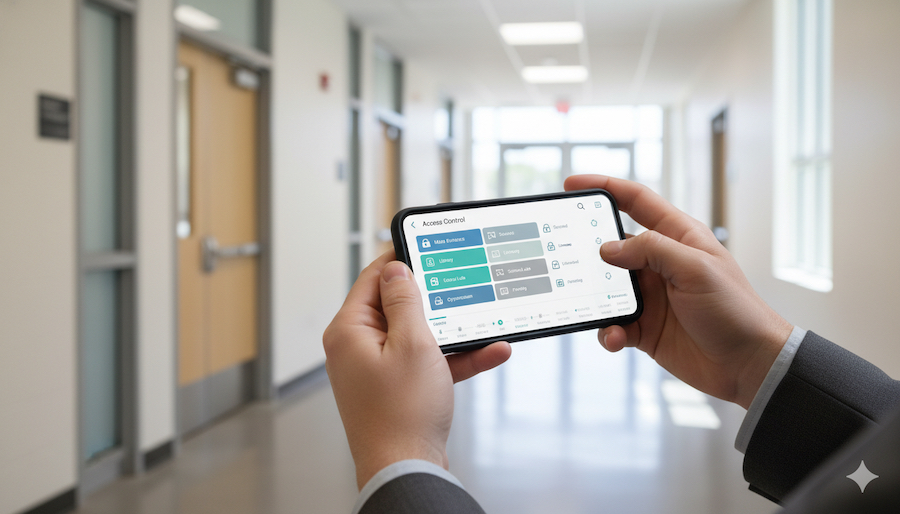How to Choose the Right Access Control System for Your School
Making Sense of Credentials, Remote Management, and Long-Term Costs Before You Commit

Your district needs a new access control system. The sales pitches have started rolling in, each vendor promising their solution is the best fit. But how do you actually evaluate these systems when you're not an IT expert? Harlingen CISD's commitment to the TEA Safe School designation means this decision carries real weight. Choose wrong, and you're stuck with a system that drains your budget while leaving security gaps. Here's what matters when selecting access control for your school campuses.
SEE ALSO: The Top 5 Reasons Schools Need Modern Access Control Systems
Credential Options
Key cards and fobs remain the most common choice. They're durable, inexpensive to replace, and staff are familiar with them. Mobile credentials, accessed through smartphone apps, eliminate the lost-card problem, as everyone already carries their phone. PIN codes work as backups but slow down entry during busy periods, and codes get shared too easily.
Biometrics offer strong security but raise privacy concerns with parents and cost significantly more. For elementary schools, expect higher rates of card replacement. Secondary students are harder on credentials but lose them less often. Match your credential type to your specific student population and budget reality.
Remote Management Capabilities
District administrators oversee multiple campuses. Driving between schools to handle access requests wastes time and money. Cloud-based systems let you manage every door from your laptop or phone, anywhere with internet access.
Look for web dashboards that don't require special software installation. Mobile apps should let you grant or revoke credentials immediately. When a contractor needs weekend access to the HVAC system, you handle it from home instead of making a trip.
Centralized user management matters most for multi-campus districts. Adding a new employee or removing a terminated staff member should update across all facilities simultaneously.
Integration with Existing Security Infrastructure
Access control doesn't operate in isolation. Your system needs to communicate with video surveillance so you can see who triggered a door event. Fire alarms must coordinate with door releases during evacuations. Visitor management and intercom systems should work together seamlessly.
Ask vendors direct questions: Does this use open protocols or proprietary technology? What happens if your company closes? Can we keep our existing door hardware? Systems built on proprietary platforms lock you into one vendor's ecosystem. Open architecture provides flexibility and protects your investment, allowing you to switch providers if needed in the future.
Scalability and Future-Proofing
Districts grow, and buildings and facilities get renovated and added. Your access control system should expand without forcing a complete overhaul. Adding doors or incorporating a new campus needs to be straightforward, not a major infrastructure project.
Consider the total cost of ownership beyond the initial purchase. Software licensing fees, credential replacements, staff training, and technical support contracts add up over five to ten years. Cloud-based systems typically deliver automatic updates, keeping you current with emerging technologies like touchless entry without additional purchases. Get vendors to break down every cost category before signing anything.
Circle Industries has spent over 60 years helping South Texas schools select security systems that fit their specific needs. Our team understands TEA requirements and the challenges Harlingen districts face. Contact us at (833) 424-7253 or connect with us online to schedule an access control consultation tailored to your campus.





